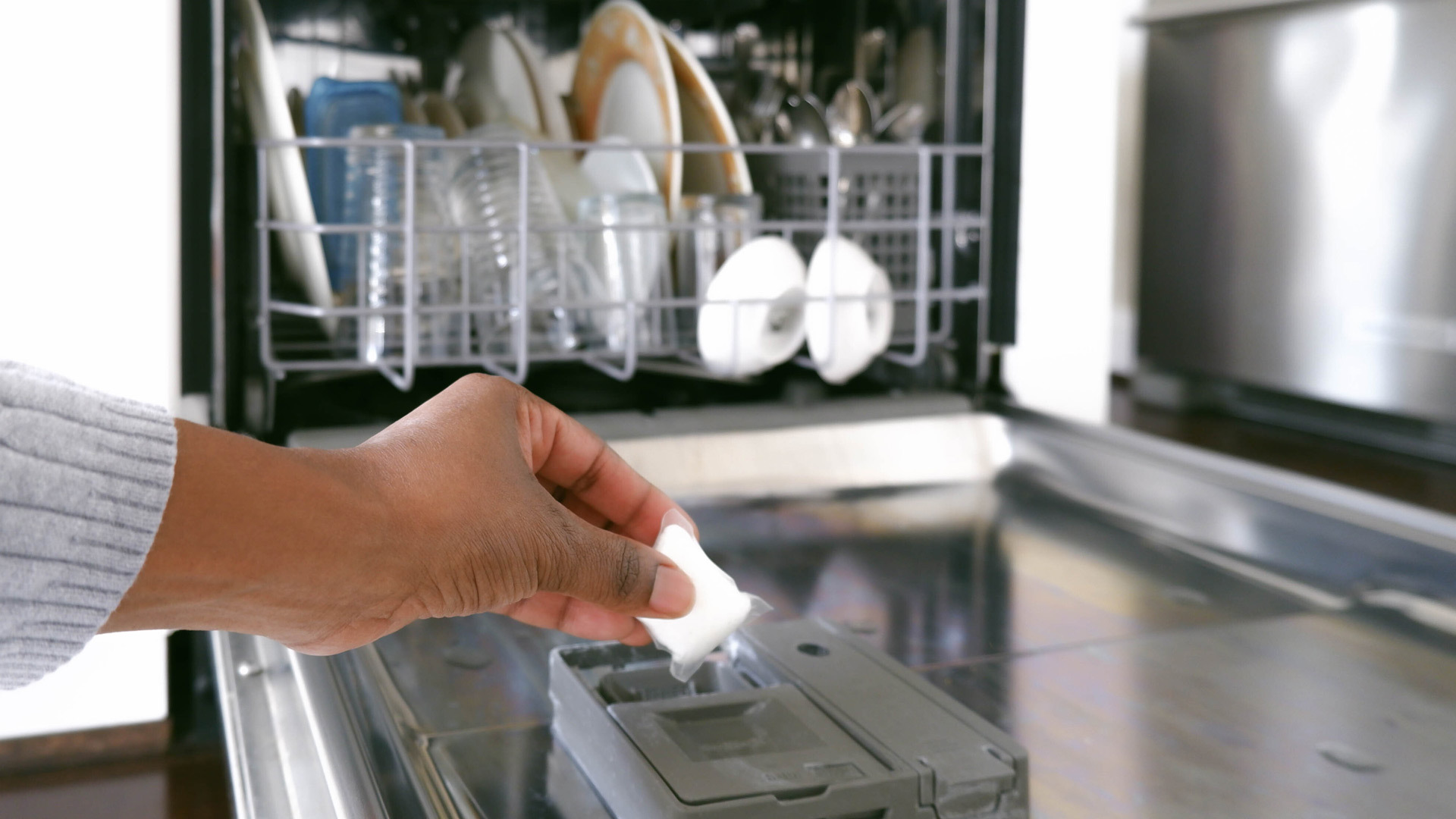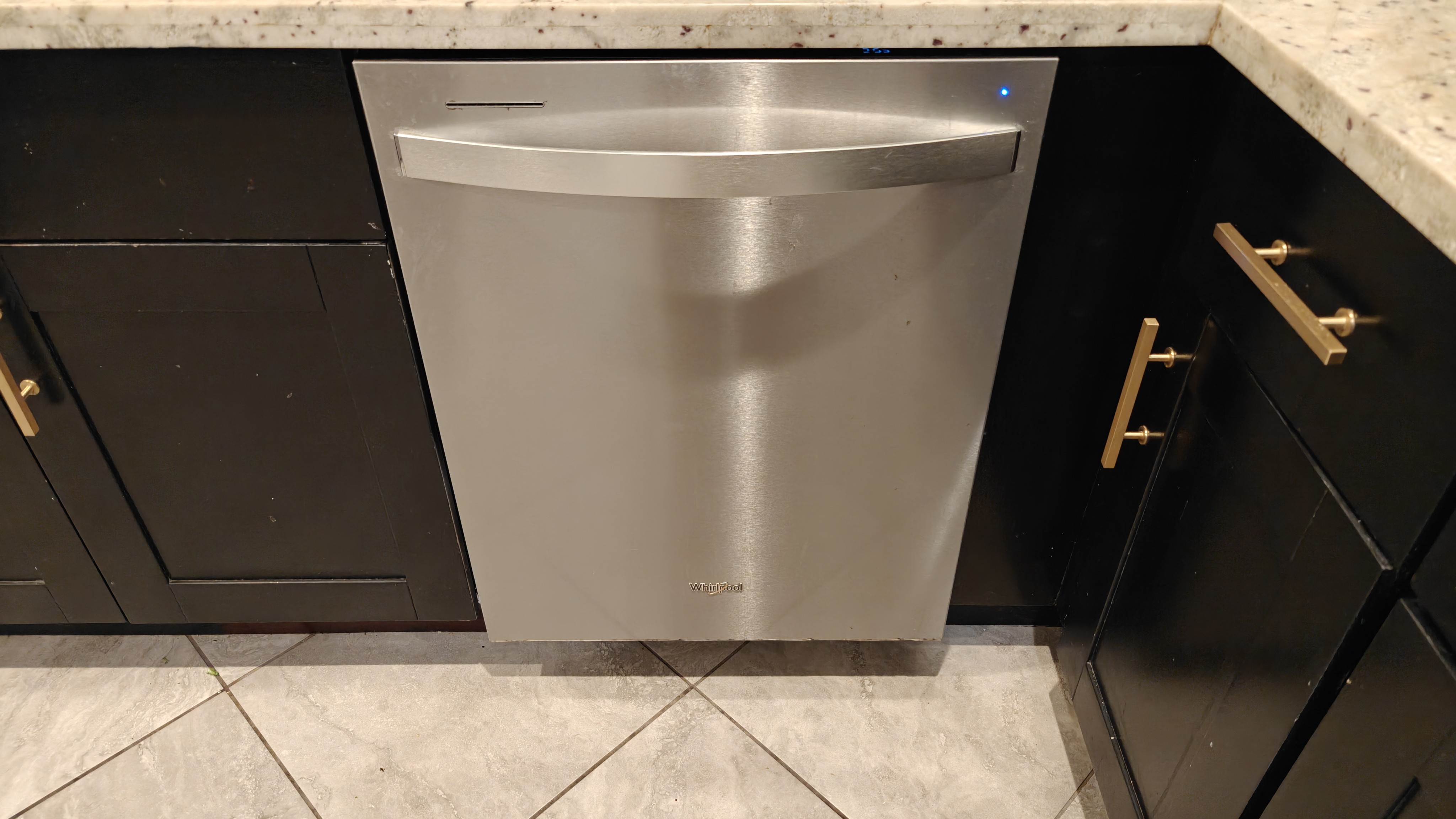How to load a dishwasher (properly): the step by step guide you never knew you needed
Find out exactly how to load a dishwasher, and end the domestic arguments about how it should be done.

Everyone knows how to load a dishwasher, right? If your home is a place for arguing about who stacks it best, it’s time to restate that debate.
Most people are happy to look for the best dishwashers when buying a new appliance. However, if you don’t stack your new dishwasher properly, it won’t deliver the best results.
Everyone has their favorite way of loading a dishwasher. Forks up or down? Plates facing in or out? Help is at hand with our definitive guide, designed to help you get an optimum clean from your dishwasher.
Keep reading for the optimal way to clean everything in your dishwasher, and hear some top tips from Lindsay Jones, New Product Brand Manager at Maytag.
Quick Steps: How to correctly load a dishwasher
- Prepare your dishes
- Load the bottom rack (pots, pans, and baking sheets)
- Load the top rack (smaller, more delicate items)
- Arrange utensils properly
- Avoid overcrowding
Step by step guide: How to correctly load a dishwasher
With a large family and a lot of dishes to wash, it can be tempting to cram everything in the dishwasher. If you don't leave a gap between the items, the spray jets won't reach them. Make sure nothing is blocking the spray arms, which need to rotate freely – watch out for pan handles or long spoons protruding below the rack. On that note, long items like knives or serving spoons are best laid on the top rack so they don't fall through and block drains.
Putting larger items at the front can keep detergent from reaching the back. Start by placing dishwasher-safe pans and plastic cutting boards at the back. Dishwasher-safe plastics should go on top racks where the temperatures are lower. Items that require more cleaning, like cookware, should also go on the bottom rack where the water pressure is strongest. Plates should be stacked vertically, and large bowls and pans should be angled or face down.
Step 1: Prepare Your Dishes
You don't have to rinse your dishes completely, but wiping off excess food prevents clogs and ensures better cleaning.
Step 2: Load the Bottom Rack
Place pots, pans, and baking sheets on the bottom rack facing downwards so water can reach dirty surfaces. Flat items should be angled so water can reach them.
Step 3: Load the Top Rack
Place smaller, more delicate items on the top rack. Securely place them so they don't move during the wash cycle. Position them upside down to prevent water pooling.
Lindsay Jones, New Product Brand Manager at Maytag, said: "Load dishes so they’re slanted and not touching, and avoid nesting. Dirty surfaces should face the center. Put plastic in the top rack, farther away from the heat source.
"Ensure spray arms aren’t blocked by tall items below and can spin freely. Also, check that nothing will block the detergent dispenser."
Step 4: Arrange Utensils Properly
Forks and spoons should be loaded with handles down for optimal cleaning. Butter knives can face up for safety, but don't put sharp knives in the dishwasher.
Step 5: Avoid Overcrowding
Overloading the dishwasher can lead to poor cleaning results. Leave space between items to allow water and detergent to circulate freely.
"It's important to load dishes correctly for your dishwasher to run properly," Jones adds. "An overloaded or improperly loaded dishwasher can use too much water, and the added pressure can push up against the door and cause—you guessed it…leaks!"

How to load glasses in a dishwasher
Wine glass holders in modern dishwashers can be flipped down when not in use. Put long-stemmed glasses in these racks. If you don't have enough space, don't stack them anywhere else, as they'll fall over. Put them in for the next cycle instead. Place tumblers over the tines of the top rack so they stay in place.
Sign up to receive the latest news, reviews, buying guides and deals direct to your inbox
It's important to place glasses carefully in the dishwasher to avoid breakage and to get a thorough clean. Start with the top rack, which was designed for delicate items. Position them upside down so water can drain more effectively and you don't have water pooling inside. Make sure there's enough space between each glass so they don't touch, which can cause chipping or breaking. Avoid overcrowding the rack, because glasses that are too close may not get clean.
If your dishwasher has designated slots for larger or stemmed glasses, use them to provide extra stability. To protect your glasses, you should also use a gentle cycle for fragile items and avoid harsh detergents.
How to load cutlery in a dishwasher
Organized is always a good thing, but you can go too far! It might seem like a good idea to have all the same kinds of cutlery facing the same way for quick unloading, but it's really not that good. When spoons nest together, water jets can't get between them. Mix up cutlery and make sure some face up and some face down so you'll get a variety of shapes and sizes. Getting your cutlery into the dishwasher correctly is essential to cleaning and keeping it safe.
Start by separating your cutlery into different sections. When you place forks and spoons with the handles down, make sure the dirty surfaces are exposed to cleaning spray. To prevent accidental cuts, place knives with the blades facing down. This minimizes the risk of injuries when unloading. It's a good idea to keep items organized and prevent nesting, which can mess up cleaning. Don't overcrowd the basket, as that limits water and detergent access.
To keep small items from falling through the basket, you can use mesh bags for measuring spoons.
How to load plates and bowls in a dishwasher
Plates and bowls should be placed facing inwards, towards the middle of the dishwasher, so the spray jets will clean them.
A bowl's concave shape can make it difficult to fit it into a dishwasher. Large items like serving bowls and pasta bowls should be placed on the bottom rack at an angle so detergent can get inside. Small bowls upside down on the top rack should be used for nibbles and tapas plates.
Then, place larger plates on the bottom rack. Make sure they face the center to get the most spray. You should place them vertically so water can get to everything. Don't stack bowls directly on top of each other, as it'll make it hard to clean. Use the bowl rack or shelf if your dishwasher has one.
You can place dessert plates and smaller bowls upside down to keep water from pooling on the top rack. Make sure there's enough space between them so water can circulate freely.

How to use a dishwasher detergent
"Dishwashers should only be loaded with detergent specified for automatic dishwashers," Jones said. "Regular dish soap, which you use to hand wash your dishes, creates too many suds that will not only overflow the tub and may leak onto the floor but also erode the inside of your dishwasher.
"As tempting as this may be, do not use dish soap in your dishwasher."
You might be tempted to use dish soap if you run out of dishwasher detergent, but this isn't a good idea because dishwasher detergents are different. As Jones warns, "Dishwashers should only be loaded with detergent specified for automatic dishwashers.
Regular dish soap, which you use to hand wash your dishes, creates too many suds that will not only overflow the tub and may leak onto the floor but also erode the inside of your dishwasher. As tempting as this may be, do not use dish soap in your dishwasher."
In order to use dishwasher detergent correctly, check the instructions on the package, as different brands might have different directions. There's usually a detergent compartment on the dishwasher door. Determine how much detergent you need based on the load size and how hard your water is. If you're washing a standard load, a full scoop is usually enough. If you're washing a lighter load, you might need less. You don't need to measure pods or tablets if you're using them.
Make sure the detergent compartment is clean and residue-free. Don't use regular dish soap, as it can make excess suds and damage your dishwasher. Close it securely to avoid spills during the wash cycle. This will make sure your dishes come out spotless every time!
Does it matter how you load a dishwasher?
How you load a dishwasher greatly impacts how well it cleans and how long your dishes last. Proper loading ensures that water and detergent are distributed evenly so all dishes get the best cleaning. Dishes, pots, and utensils need to be loaded correctly to reach every surface to avoid leftover food particles. If you overload or arrange things poorly, you'll get clogs and bad cleaning.
Stacking bowls or placing large items in front of spray arms can prevent water from getting to smaller items. In addition, improper placement can increase the risk of breakage, especially for glassware. Following loading tips—like placing big stuff at the bottom and smaller stuff at the top—can make your dishwasher work better.
You will save time and energy, and your dishes will come out clean and undamaged.
Sara is an experienced magazine journalist and commercial copywriter. Writing helpful home-related content for Top Ten Reviews, Sara splits her time between the UK and France, alongside her Springer Spaniel.

